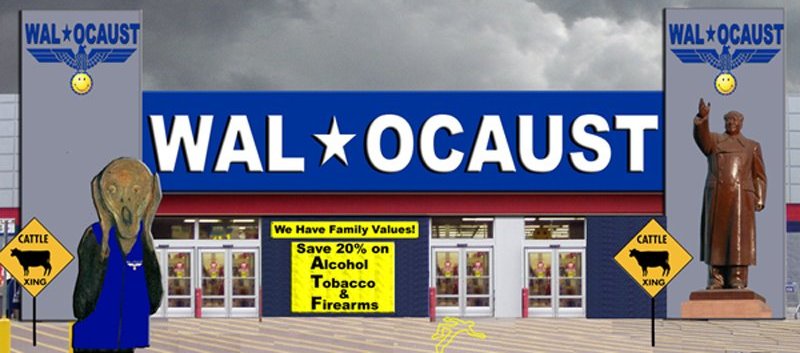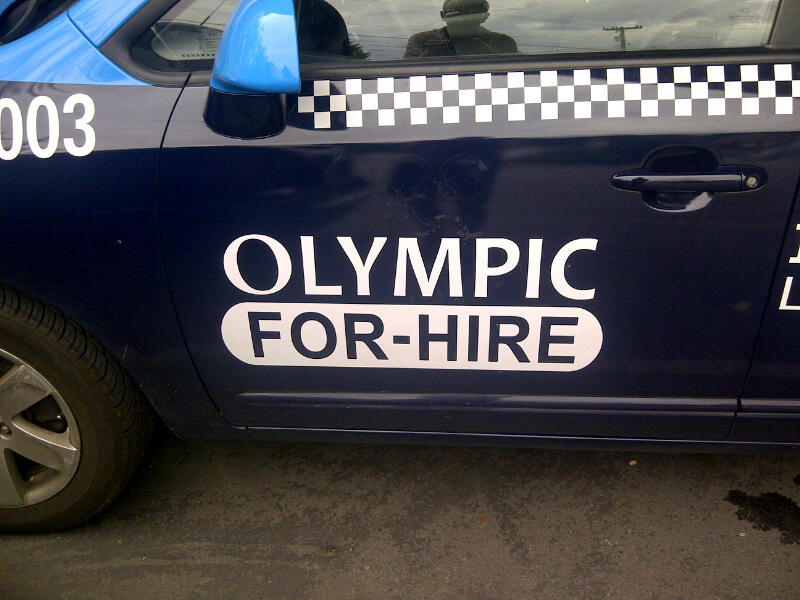Entries by Michael Atkins (1064)
Analyzing the Controversial Claim for Contributory Trademark Dilution
 Following is a guest post from my former student and recent UWSL LL.M. graduate, Aman Gebru, on the evolving theory of contributory trademark dilution, a claim he notes recently got traction in a local case. This post is adapted from his seminar paper entitled: “The Claim of Contributory Dilution under the Trademark Dilution Revision Act.” In the fall, Mr. Gebru will continue his legal studies at the University of Toronto, where he will pursue the equivalent of a Ph.D.
Following is a guest post from my former student and recent UWSL LL.M. graduate, Aman Gebru, on the evolving theory of contributory trademark dilution, a claim he notes recently got traction in a local case. This post is adapted from his seminar paper entitled: “The Claim of Contributory Dilution under the Trademark Dilution Revision Act.” In the fall, Mr. Gebru will continue his legal studies at the University of Toronto, where he will pursue the equivalent of a Ph.D.
Praise and criticism for claim of contributory dilution:
“[It is] the most pernicious concept ever to come out of trademark theory.” -Mark A. Lemley, The Modern Lanham Act and The Death of Common Sense.
“[S]ome form of imputed liability for dilution is no more ‘pernicious’ than dilution itself” -John T. Cross, Claim for Contributory and Vicarious Liability for Trademark Dilution.
“While there is no authority directly on point, there would seem to be no logical reason why the doctrine of contributory infringement should not apply to a claim under the federal anti-dilution law.” -J. Thomas McCarthy, McCarthy on Trademarks.
“It would be inconsistent with the Trademark Dilution Act to prohibit a cause of action for contributory dilution.” -Hon. Ricardo Martinez, Microsoft v. Shah, No. 10-653 (W.D. Wash. Jan. 12, 2011).
Imagine that Napple, a famous electronics producer, has succeeded in giving consumers a “high-social-class” impression through its smart-phone and laptop products. Simply put, consumers feel classy when they purchase Napple’s products. Marketers have identified this method of marketing is what drives the high demand for Napple’s products. MicroGoogle, Napple’s arch-rival, wants to destroy the advantages its competitor has gained through this strategy. MicroGoogle’s CEO consults her lawyers, who say if MicroGoogle uses Napple’s trademark in a confusing way or directly dilutes it, they would be liable. Therefore, MicroGoogle’s CEO decides to use Napple’s trademarks in a way that reduces its high-class impression. The strategy works, and a sharp decline is noticeable in Napple’s sales shortly thereafter. Within weeks, MicroGoogle decides to go for the kill shot, and pays the influential “Rapper Snapper,” to use offensive slang in reference to people using Napple’s products in his music. Napple, furious about the issue, decides to bring a suit against MicroGoogle.
Does Napple have a valid claim for contributory dilution against MicroGoogle?
The cause of action for dilution is unique in trademark law. Traditionally, protection was limited to guard against the confusing use of a distinctive mark, in an effort to protect consumers. Under dilution principles, there is no requirement to show confusion. In dilution, the plaintiff is saying “I have invested so much in promoting my famous mark, and its distinctiveness is being ‘blurred,’ or its wholesomeness is being ‘tarnished,’ by the defendant.”
Although the dilution has become widely accepted, the claim of contributory dilution has had a different fate. Most courts faced with the claim failed to give direction as to whether a valid claim for contributory dilution exists. While Congress had the chance to clarify the confusion when it enacted the Trademark Dilution Revision Act of 2006, it actually added to the confusion when it excluded the contribution to a “fair use dilution” from liability and kept silent about the contribution to “non-fair-use” dilution. The confusion has not been clarified for some time.
That is, until the Western District recognized what some have called a “novel cause of action” and denied a motion to dismiss the claim in July 2012 in Microsoft v. Shah. While earlier courts struggled with the notion that such a cause of action should be recognized, Judge Ricardo Martinez held: “It would be inconsistent with the Trademark Dilution Act to prohibit a cause of action for contributory dilution.” Since most of the decisions regarding the cause of action have been made by trial courts, however, it is still not clear if a valid claim for contributory dilution will exist on a broader scale. The issue becomes more interesting when one considers the enormous amount of investment required to create a famous, wholesome, and highly distinctive mark. The recent debate and lobbying regarding proposed SOPA/PIPA legislation may also put pressure on the issue of contributory liability for dilution online.
My paper (accessible here) discusses case law regarding contributory dilution from various circuits and analyzes the direction courts seem to be heading. I argue that even if the status of the claim is not yet clear, courts should give broader recognition to the claim and use existing jurisprudence to provide for its elements — similar to the accepted cause of action for contributory trademark infringement.
Thank you, Aman!
N.B. Readers may remember the Shah decision from STL’s post here.
Seattle Times Reports on Confusion over Microsoft's "Metro" Name
The Seattle Times yesterday wrote about Microsoft’s abrupt decision to stop referring to its forthcoming Windows 8 user interface as “Metro.”
Whether it was an internal project name or external trademark, the change reportedly led to some confusion.
Word is a German company using the same mark had threatened to sue.
I got a few quotes in the article about how even big companies sometimes don’t do their homework in selecting a name. I’m not saying that’s what happened here, since Microsoft changed course before most consumers were exposed to the mark. From a trademark perspective, that’s what’s important, since a trademark tells consumers where a product comes from.
Other companies have been less fortunate. You’d be shocked if you knew about the worldwide advertising campaigns that name-brand companies have launched promoting products held back by problematic new trademarks. (I’ve been involved in two such situations, which I can’t discuss because of confidentiality issues.) Not a good way to spend precious marketing dollars.
The point is, even companies with massive resources sometimes don’t do their homework. Other trademark owners can learn from their lessons. Research your proposed trademark before investing in it. Make sure it doesn’t implicate anyone else’s rights. And if you plan to register it, make sure you’ll be able to do so.
Trademark Law in the Age of Social Media: CLE Coming Soon
 When the First Amendment collides with the Lanham Act,
When the First Amendment collides with the Lanham Act,
the First Amendment usually wins. (As is evident from the above parody.)
I’m speaking at an upcoming CLE on social media.
My topic, of course, is trademark law in that context.
My presentation materials are here. I will publish my slides when the presentation is over.
The issues are good, as well as the slate of other speakers. More details available here.
The CLE spans two days: Sept. 6 and 7, at the Washington State Convention Center.
If you attend, please say hello!
Trademark Tiff Motivates Seattle Restaurant to Change Its Name
One of my local joints, The Publican, is now called the Burgundian Tavern.
Why?
A trademark problem. Apparently, they tussled with a Chicago restaurant of the same name soon after opening.
The Seattle owner called the whole thing “an unfortunate mess,” and a writer reported the establishment “had already spent more money on lawyers than made him comfortable.”
Two things come to mind. First, there’s seemingly little chance of confusion between a restaurant in Chicago and a restaurant in Seattle, even if they have the same name. And unless the Chicago restaurant has some sort of presence here, its trademark rights probably would be junior to the Seattle restaurant’s unless and until the Chicago restaurant started doing business here — notwithstanding its federal registration.
Second is the practical reality that fighting a trademark fight is a financial drain and big distraction for a new business. Rights aside, it’s just too big a pain for most new business owner to fight — even if he or she can win.
The take-away is that new trademark owners should do their homework. Hit Google and the U.S. Patent and Trademark Office’s database. Is anyone out there using your contemplated mark to sell anything that resembles what you intend to sell? Even if there are no identical hits, remember the standard for trademark infringement isn’t “identicality”; it’s “likelihood of confusion.” That means even similar marks paired with similar goods or services can get a new trademark owner in trouble. Since courts usually resolve conflicts between trademark owners by applying a simple rule called “the first to use wins,” later adopters usually lose these fights. In other words, they’re the ones that need to change their trademarks.
A little homework on the front end — before signs are ordered, advertising is purchased, and customers start to learn your name — can help a new business avoid trademark trouble down the road.
The Olympic Rings are Gone for Local Taxi Company
 No more rings. Olympic for Hire removes the Olympics’ logo from its cars
No more rings. Olympic for Hire removes the Olympics’ logo from its cars
This is a small story (though broadcast here).
A local taxi company that stepped in it. They used the name “Olympic,” along with the Olympic Rings, to promote their service.
That’s not allowed by federal law. Particularly during the Olympic Games.
But the company has taken note, and removed the Olympic Rings from its cars.
That should be the end of it.
Hopefully it will be.